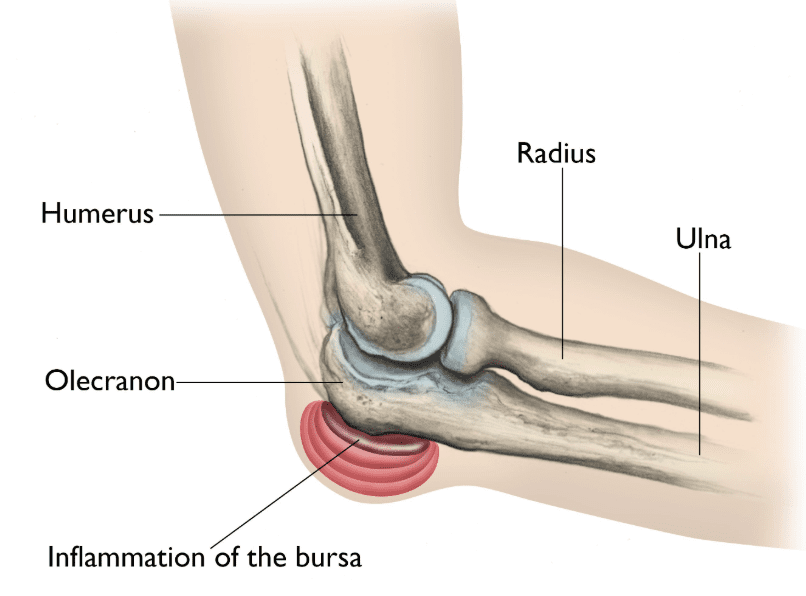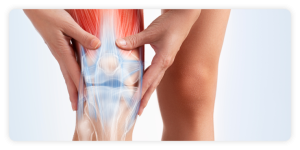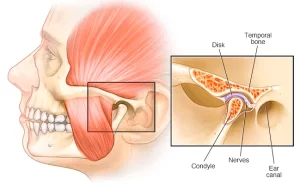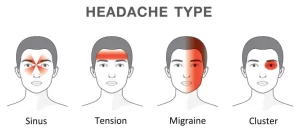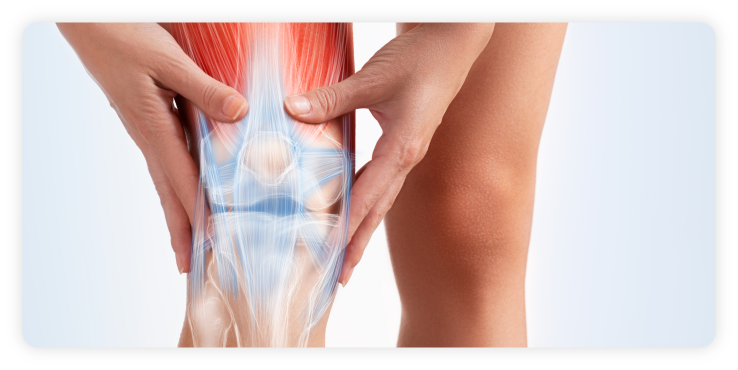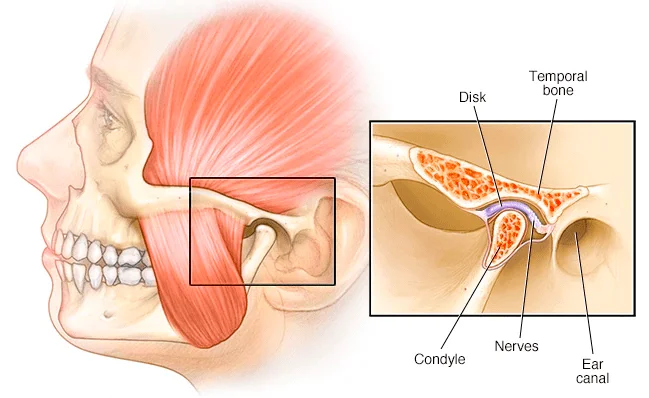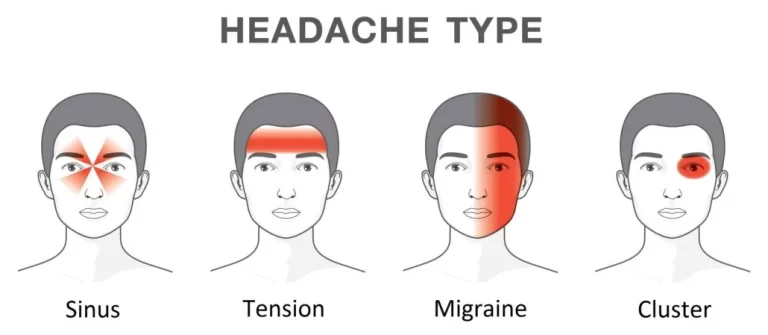What is Elbow Bursitis?
Elbow Bursitis occurs in the olecranon bursa, a thin, fluid-filled sac that is located at the boney tip of the elbow (the olecranon). This condition is also referred to as Olecranon Bursitis.
The olecranon is the pointed bone at the tip of the elbow. Between the point of the elbow and the skin, there is a thin sac of fluid known as a bursa. Bursaes are located near joints and cushion your bones, muscles, and tendons. The elbow bursa helps your skin smoothly slide over the olecranon bone. If a bursa gets inflamed, it can fill with extra fluid and become a painful condition known as bursitis. Bursitis can also commonly occur in joints near your shoulder, hip, knee, and heel.
What causes Elbow Bursitis?
The most common causes of bursitis are repetitive motions or positions that put pressure on the bursae around a joint. Examples include throwing a baseball or lifting something over your head repeatedly, leaning on your elbows for long periods, and extensive kneeling for tasks such as laying carpet or scrubbing floors. Other causes include injury or trauma to the affected area, inflammatory arthritis such as rheumatoid arthritis, gout, and infection. In many cases, targeted physiotherapy in Singapore can play a key role in reducing pain, restoring mobility, and preventing recurrence.
Symptoms of Elbow Bursitis
The symptoms of elbow bursitis include stiffness, achy feeling, pain with movement or pressure, and red and swollen appearance. Swelling can develop gradually over time or it can appear abruptly.
Elbow Bursitis Treatment
Physical therapy can help with Elbow Bursitis. Your physical therapist will work with you to design a specific treatment program that will speed your recovery, including exercises and treatments that you can do at home. Physical therapy will help you return to your normal lifestyle and activities. Apart from manual therapy, exercises and modalities such as therapeutic ultrasound to control and reduce your pain and swelling will be incorporated. Your therapist will choose specific activities and treatments to help restore normal movement in the elbow and arm. These might begin with “passive” motions that the therapist performs for you to gently move your elbow joint, and progress to active exercises and stretches that you do yourself. Strengthening and stretching exercises to perform at home will be prescribed. Functional training will also be taught to manage pain. If in doubt, please seek professional advice.
Managing Elbow Bursitis with Professional Support
If you’re dealing with discomfort or limited movement from elbow bursitis, seeking guidance from a qualified physiotherapist can be helpful. Our Physio Clinic in Singapore offers tailored care to support your recovery.
Check out our popular articles: Diastasis Recti, Tight Back Muscles, Irritable Bowel Syndrome (IBS), Temporomandibular Joint (TMJ) Dysfunction, Tennis Elbow, Wrist Tendon Injury, Sciatica, Whiplash, Hernia, Herniated Disc (Slipped Disc).
